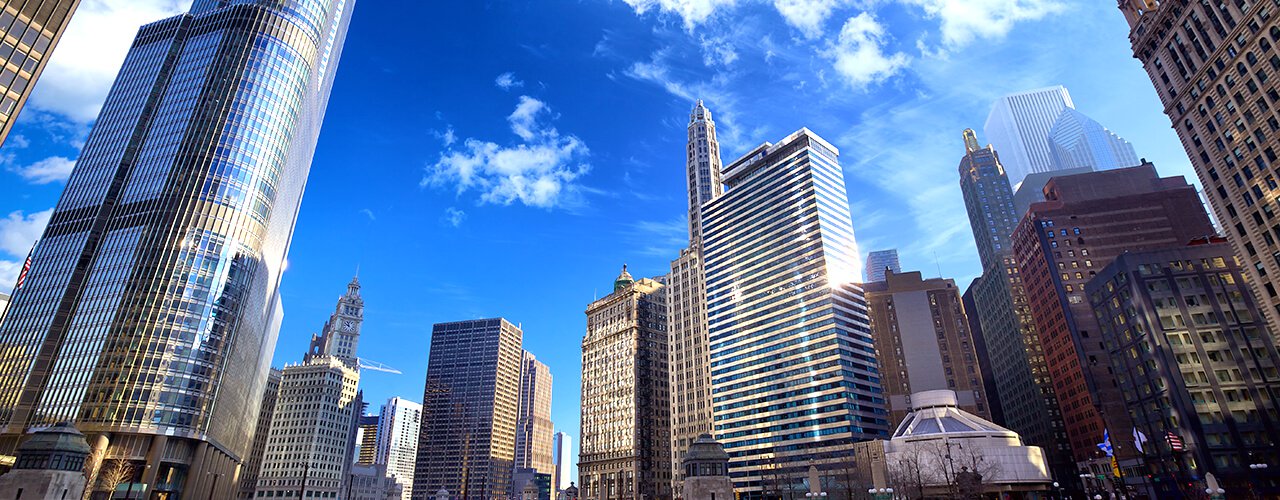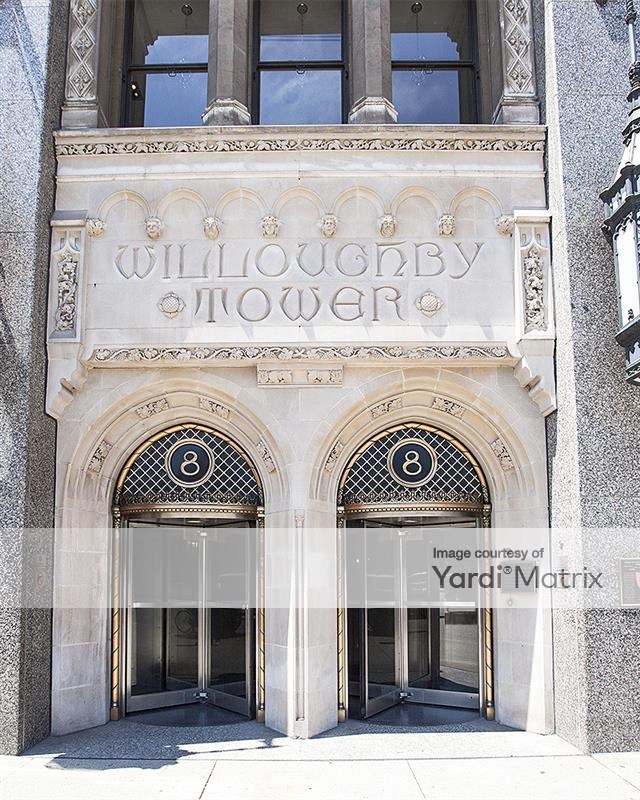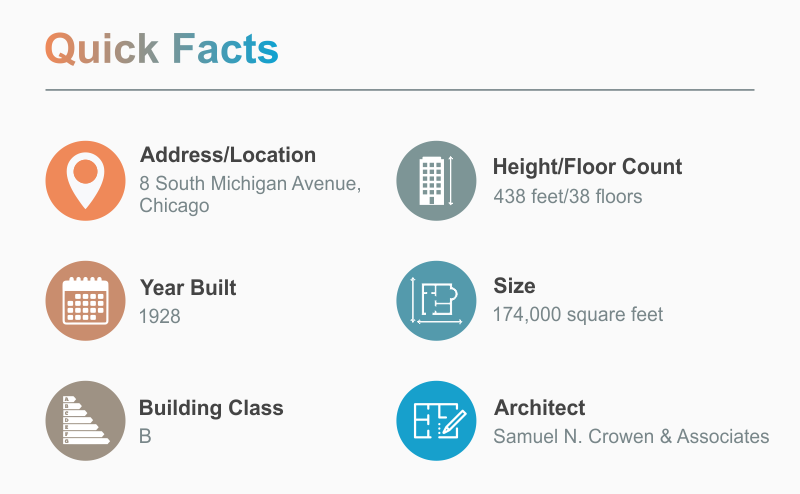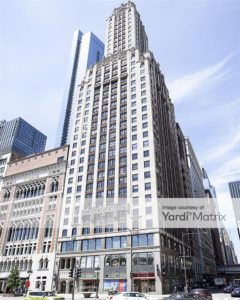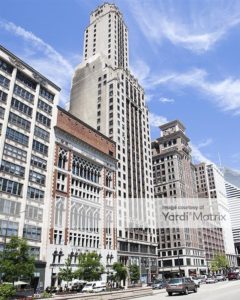The site of the Willoughby Tower at 8 South Michigan Avenue in Chicago has been occupied for nearly 200 years. The Sisters of Mercy founded Chicago’s first convent there in 1846, which was followed by the 8-story Western Bank Note Company building in 1891. Construction on Willoughby Tower began in 1928.
Original plans for the building called for the first six floors to be made with a combination of grey Bedford granite and black brick, creating Chicago’s first intentionally black skyscraper. Prior to the start of construction, plans were changed to use variegated Indiana limestone on the Madison and Michigan street fronts, with the first two floors of granite. A Gothic motif is used throughout the interior and exterior of Willoughby Tower with the lobby trimmed in solid cast and green Italian bronze and solid bronze doorways.
This iconic office building in Chicago rises on leased ground. Back in the 1920s, E.M. Willoughby of Willoughby & Co. originally owned the ground under the property. Willoughby Tower LLC is now the leaseholder. In 2015 the ground lease was amended to include an annual lease payment of $415,000 with 1% annual increases.
Located at the southwest corner of Michigan Avenue and Madison Street, Willoughby Tower sits directly across from Millennium Park in the Downtown Chicago/Historic Michigan Boulevard District. Neighboring properties include the Chicago Landmark Gage Building and the Monroe Building at 104 South Michigan.
Just as in 1891, the property currently has a bank in the building. Corridors have been newly renovated and tenant services include on-site property management and 24-hour security. Commuting to Willoughby Tower from other parts of Chicagoland is convenient with easy access to the Metra and South Shore trains. The CTA Red, Purple, Green, Blue, Brown, and Orange bus and train lines are nearby.
Willoughby Tower is also in a prime location for both business and tourism. With a Walk Score of 98, the property is strategically situated between Maggie Daley Park and the Michigan Lakefront, and the Chicago Loop.
The Loop is the nation’s second-largest commercial district, second only to Manhattan. About 27% of Chicago’s workforce is employed here. The Loop is also home to nearly 45% of the office space in Chicago. Second City’s central business district has nearly 177 million square feet of rentable office space with over 5 million square feet coming to market within the next couple of years. Over the last three years, office base rents have consistently increased with positive net absorption and declining vacancy rates.
The skyline is filled with world-class architecture and some of the tallest buildings in the world. One-of-a-kind office buildings in The Loop include Willis Tower (formerly the Sears Tower), the 1.3 million-square-foot 311 South Wacker Drive office building, and the 60-story Franklin Center at 227 West Monroe Street. Fortune 500 companies such as Aon Corporation, United Airlines, and Blue Cross Blue Shield have their headquarters in the Chicago Central Business District.
Property photos courtesy of Yardi Matrix.

